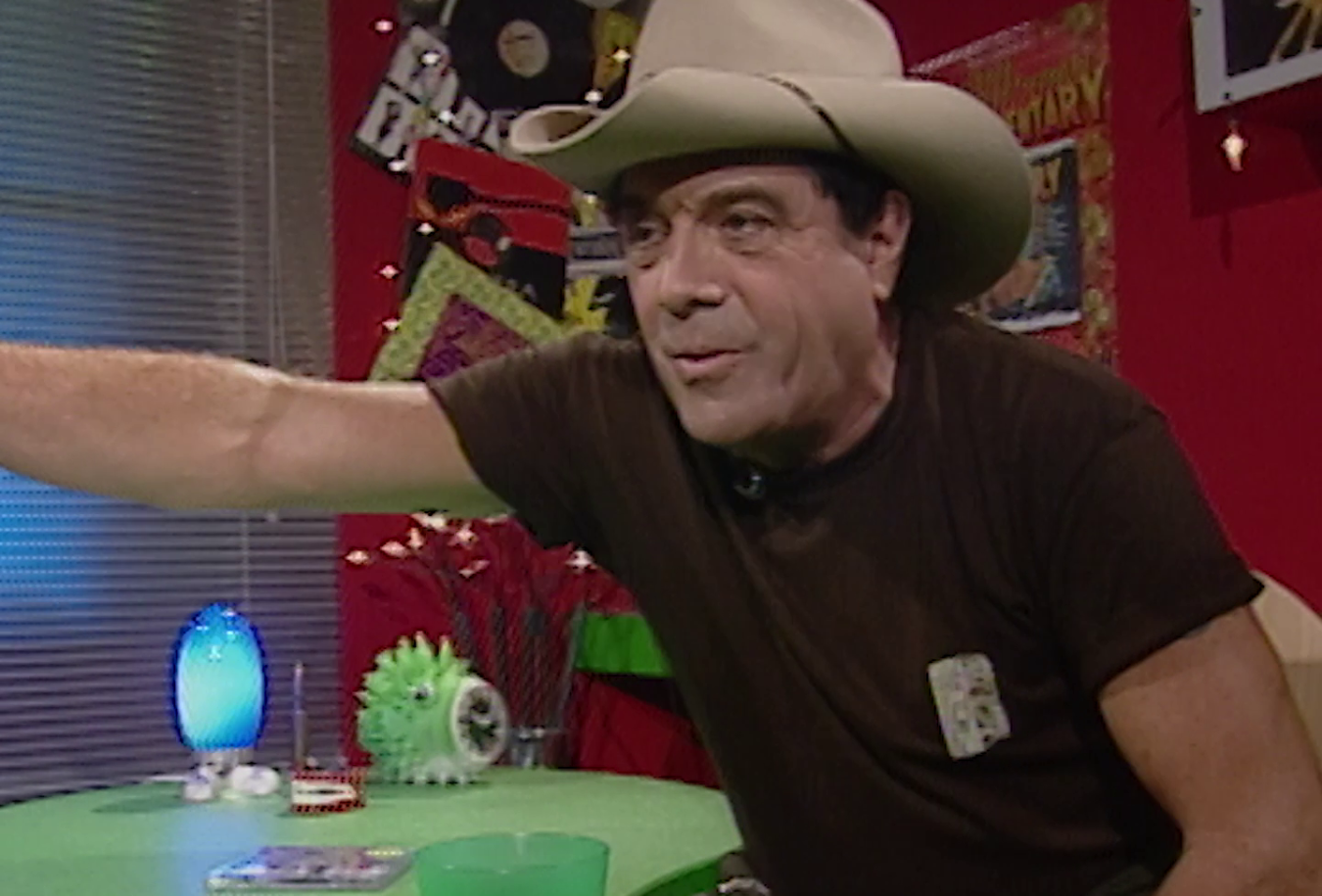
That's cricket: Don Bradman
Don Bradman demonstrates his batting technique, executing a 'pull shot’, an 'off drive’ and a 'leg glance’. He is filmed from a number of different angles both in front of and behind the wicket, in slow motion and at standard speed. Bradman speaks about the importance of teamwork in his success, the uncertainty and interesting aspects of cricket and his love of the game. The clip concludes with footage of a child playing on the grass with a miniature cricket set as the narrator says that cricket is 'in the blood of Britishers’ and its bond of sporting friendship 'helps unite an Empire’.
Summary by Poppy de Souza
Don Bradman’s natural ability, combined with his cricketing technique, made him the most popular cricketer of the time. For those who couldn’t watch him playing at the ground, newsreels and featurettes like this would have been the only way fans could see him. What is significant in this clip is that the camera films Bradman in a tight shot from a number of different angles, both in slow motion and standard speed – unusual for the time. The 'unusual angle’, in which the camera films Bradman from a position behind the stumps, would not have been used in coverage of test matches at the time. The slow-motion camera accentuates Bradman’s movements to highlight his skill and agility with the bat.
Probably the best line in this featurette comes when Woodfull introduces Bradman to the audience as 'the possessor of more records than a gramophone company’. As referred to in this clip, Bradman scored a world record highest individual tally by a test player – a massive 334 runs – at Headingley during the 1930s Ashes tour to England. But in his address to camera, Bradman humbly emphasises the importance of teamwork to achieving individual success. The dialogue was scripted by Hall, but the players and the Australian Cricketers’ Association had a certain amount of input. At the end of the clip, the emphasis on cooperation is extended to include the unity of cricket-playing countries in the British Empire.
Don Bradman synopsis
This featurette was directed by Ken G Hall for Australasian Films and made with the cooperation of seven members of the successful Australian XI cricket team, including Sir Donald Bradman, who toured England in 1930. It promotes cricket and its importance to the British Empire and Australian identity. The film includes footage from a 1905 British Pathe Gazette newsreel and a 1921 cricket tour, and highlights the sporting skill of some of the 1930s test players. Don Bradman and team captain Bill Woodfull address the audience throughout the film.
Curator's notes
Under the guidance of Australasian Films’s managing director, Stuart Doyle, Ken G Hall directed this featurette for Union Theatres about the game that, according to the closing narration, 'helps unite the Empire’. Cricket’s popularity was buoyed by the recent success of Don Bradman, one of the all-time greats of the game, and the young Hall wanted to record as many of the current cricketing champions on sound film as possible. Hall had been on staff since he was 17 – starting out in the publicity department – but this was his first major work as director for the company. He scripted the film’s narration as well as Bradman’s and Woodfull’s pieces to camera. Riding on the popularity of cricket with the populace, as well as the relatively new medium of sound film, That’s Cricket was a success with audiences at Sydney’s Prince Edward Theatre and around Australia.
The film makes explicit the importance of the game within the British Empire (of which Australia was a part). Britain – and by extension Australia, another 'civilised’ nation which played the 'gentlemen’s game’ – was spreading cricket to countries like Ceylon and India. At the height of the British presence in India (today, one of the world’s great cricketing nations), cricket is linked with colonialism. As a game common to all nations throughout the British Empire, cricket helps 'unite the Empire’ and plays an important part in 'civilising’ the peoples of the subcontinent.
Many of the players in this film can be seen in a more relaxed and informal mode in home movie footage taken by team manager WL Kelly during the 1930 tour to England (see Henshall, Mr: Australian Cricketers Visit Ceylon, Naples, Switzerland and Practise at Lords).
Notes by Poppy de Souza
The National Film and Sound Archive of Australia acknowledges Australia’s Aboriginal and Torres Strait Islander peoples as the Traditional Custodians of the land on which we work and live and gives respect to their Elders both past and present.


